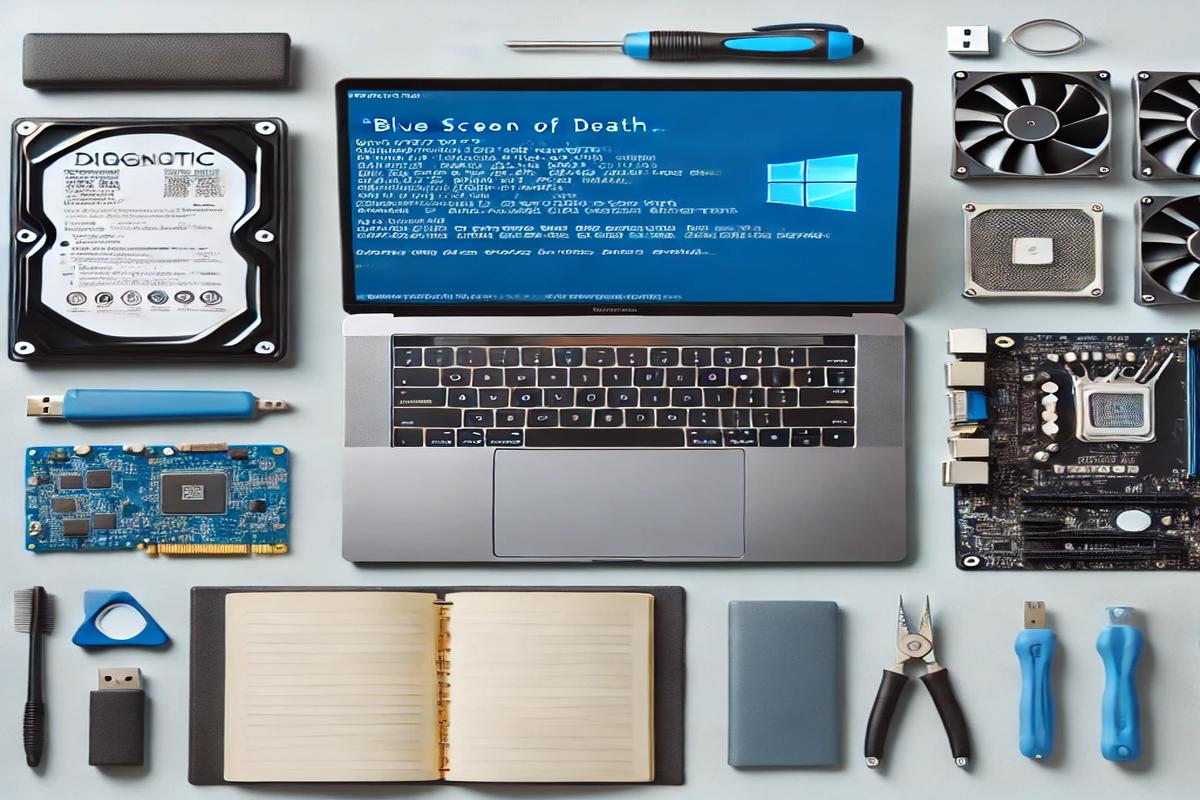The Blue Screen of Death (BSOD) is one of the most frustrating and intimidating errors encountered in the Windows operating system. This comprehensive guide aims to help you identify, troubleshoot, and resolve BSOD errors effectively. By following the detailed steps outlined below, you can address the root causes of BSOD and restore your system to optimal performance.
What Is the Blue Screen of Death (BSOD)?
BSOD errors occur when the Windows operating system encounters a critical issue that forces it to stop functioning to prevent damage to the hardware or software. These errors are often accompanied by a blue screen with a specific error code, such as IRQL_NOT_LESS_OR_EQUAL or CRITICAL_PROCESS_DIED. Understanding the error code is the first step in resolving the issue.
Common Causes of BSOD Errors
BSOD errors can arise from a variety of issues, including:
- Hardware Failures: Faulty RAM, hard drives, or other components.
- Driver Conflicts: Incompatible or outdated drivers.
- Software Bugs: Corrupt system files or incompatible third-party applications.
- Overheating: Excessive heat causing hardware instability.
- Malware and Viruses: Malicious software disrupting system operations.
- Power Supply Issues: Inconsistent power delivery to components.
How to Troubleshoot BSOD Errors
1. Identify the Error Code
When a BSOD occurs, note the error code displayed on the screen. This code provides critical information about the source of the problem.
- Use your phone or camera to take a picture of the error screen.
- Look up the error code on the Microsoft Support website for detailed explanations.
2. Boot into Safe Mode
Safe Mode loads only the essential drivers and services, making it easier to troubleshoot.
- Restart your computer and press
F8orShift + F8repeatedly during startup. - Select Safe Mode or Safe Mode with Networking.
- If the system boots successfully, the problem may be related to third-party software or drivers.
3. Check for Recent Changes
Determine if recent changes to your system caused the BSOD.
- Uninstall Recent Updates:
- Go to Settings > Update & Security > View Update History.
- Uninstall any recently installed updates.
- Remove Newly Installed Hardware:
- Disconnect recently added peripherals like external drives or printers.
4. Update or Roll Back Drivers
Outdated or incompatible drivers are a common cause of BSOD errors.
- Update Drivers:
- Open Device Manager by pressing
Win + Xand selecting it from the menu. - Right-click on a device and select Update Driver.
- Open Device Manager by pressing
- Roll Back Drivers:
- In Device Manager, right-click the device, choose Properties, and navigate to the Driver tab.
- Click Roll Back Driver if the option is available.
5. Run Diagnostic Tools
Several built-in and third-party tools can help identify hardware or software issues.
- Windows Memory Diagnostic:
- Press
Win + R, typemdsched.exe, and press Enter. - Choose Restart now and check for problems.
- Press
- CHKDSK (Check Disk):
- Open Command Prompt as an administrator.
- Type
chkdsk /f /rand press Enter.
- SFC (System File Checker):
- Run
sfc /scannowin Command Prompt to repair corrupted system files.
- Run
6. Scan for Malware
Viruses and malware can corrupt system files and cause BSOD errors.
- Use Windows Defender or a trusted third-party antivirus tool to perform a full system scan.
- Remove any detected threats and restart your computer.
7. Monitor System Temperatures
Overheating can lead to hardware instability and BSOD errors.
- Clean dust from vents and fans.
- Use tools like HWMonitor to monitor CPU and GPU temperatures.
- Ensure proper airflow in your computer case.
Advanced Solutions for Persistent BSOD Errors
1. Perform a System Restore
If you suspect recent changes caused the issue, revert your system to a previous state.
- Go to Control Panel > System and Security > System > System Protection.
- Select System Restore and choose a restore point.
2. Reset or Reinstall Windows
If all else fails, resetting or reinstalling Windows can resolve persistent issues.
- Reset Windows:
- Go to Settings > Update & Security > Recovery.
- Select Reset this PC and choose either Keep my files or Remove everything.
- Reinstall Windows:
- Use a bootable USB drive with the Windows installation media.
- Perform a clean installation following on-screen instructions.
Preventing Future BSOD Errors
To minimize the risk of BSOD errors, adopt the following best practices:
- Keep Your System Updated:
- Regularly install Windows updates and driver updates.
- Install Trusted Software Only:
- Avoid downloading software from unverified sources.
- Use Reliable Hardware:
- Invest in high-quality components and peripherals.
- Maintain System Security:
- Use antivirus software and a firewall to protect against malware.
- Backup Your Data:
- Regularly back up important files to external drives or cloud storage.
Conclusion
The Blue Screen of Death is a daunting but manageable issue with the right approach. By identifying the error code, using Safe Mode, updating drivers, and employing diagnostic tools, you can resolve most BSOD errors effectively. If the problem persists, advanced solutions like system restore or reinstalling Windows can help.
By following the steps outlined in this guide, you can confidently address BSOD errors and keep your system running smoothly.
















